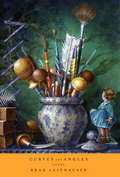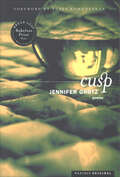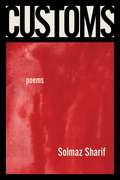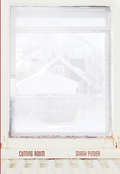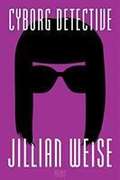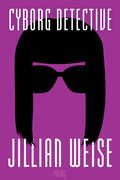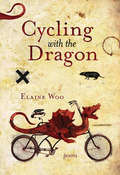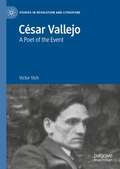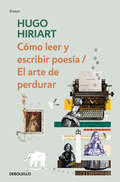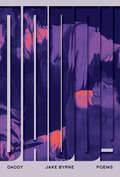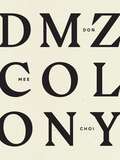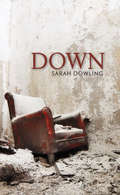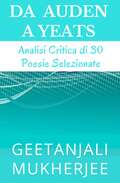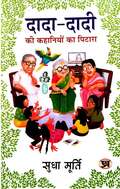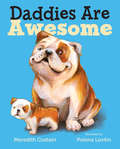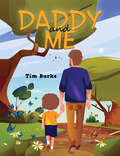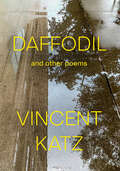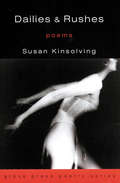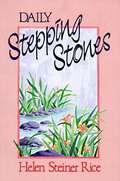- Table View
- List View
Curves and Angles
by Brad LeithauserIn his first collection since the widely acclaimedDarlington’s Fall, Brad Leithauser takes the reader on a bracing poetic journey. Curves and Anglesbegins in a warm, soft, populated world (these are the curves of the human body, as well as the elliptical pathways of human motivation), and it concludes in a cooler, sharper, more private place—the less-giving angles of an inanimate universe. The first section, “Curves,” introduces us to a couple of passionate young lovers, indoors in the city on a rainy afternoon; to a vociferous cluster of children playing on a Midwestern summer evening; to a godlike scuba diver, “all long gold limbs and a restless halo of long gold hair. ” In a pair of long poems, two aging men—one a science-fiction writer of the 1950s, the other a traveler in an airport bar—confront their mortality. “Angles” guides us to a rarely opened north-looking attic room, made brilliant by a nearby maple in full fall orange; to a sunny Louisiana kitchen, where two bowls—one brimming with semiprecious stones, one filled with seashells—are locked in an eternal silent beauty contest; to a frozen Icelandic lake; and to a narrow unmarked entryway that possibly leads to our “true and unbounded kingdom. ” Curves and Angleswanders from the balmy waters of the South Pacific to the crystalline wastes of the Arctic, unified throughout by an embracing love of the natural world in all its inexhaustible variety—whether lush or spare, peopled or solitary, curved or angled. It’s a journey made unforgettable by these wise and exuberant poems.
Cusp: Poems
by Jennifer GrotzEntre chien et loup — between dog and wolf. This French colloquialism for twilight informs Jennifer Grotz’s debut poetry collection, Cusp. A winner of this year’s Bakeless Prize for poetry, Grotz explores the peculiar territory of middleness — neither dark nor light, not quite familiar but not fully unknown. It is a place with its own dangers, its own knowledge: road signs in a French tunnel remind drivers of their headlights in the temporary darkness; a scratchy recording of the last castrato highlights art’s uneasy coupling of inspiration and artifice. Personal, thoughtful, inquisitive, and introspective, these poems reveal Grotz’s varied influences, from the “quilted fields” of west Texas to a jazz club in Paris, from a sexy rodeo rider to Jean-Jacques Rousseau. It is the dizziness of the foreign and the strangeness of what’s all around that gives Cusp its energy, its vitality, signaling the arrival of a distinctive new voice in American verse.
Customs: Poems
by Solmaz SharifFinalist for the 2023 Kingsley Tufts Poetry AwardFinalist for the 2022 L.A. Times Book Prize for PoetryLonglisted for the 2023 PEN/Jean Stein Book AwardIn Customs, Solmaz Sharif examines what it means to exist in the nowhere of the arrivals terminal, a continual series of checkpoints, officers, searches, and questionings that become a relentless experience of America. With resignation and austerity, these poems trace a pointed indoctrination to the customs of the nation-state and the English language, and the realities they impose upon the imagination, the paces they put us through. While Sharif critiques the culture of performed social skills and poetry itself—its foreclosures, affects, successes—she begins to write her way out to the other side of acceptability and toward freedom.Customs is a brilliant, excoriating new collection by a poet whose unfolding works are among the groundbreaking literature of our time.
Cutting Carrots the Wrong Way
by Kobus MoolmanThe American poet C.D. Wright, in her collection Cooling Time – a fragmented mix of memoir, essay and poems – wrote the following: For decades the critical question has been, Can poetry survive? Is it mutable, profound, sentient, resplendent, intense, stalwart, brave, alluring, exploratory, piercing, skilful, percipient, risky, exacting, purposeful, nubile, mirth-provoking, affective, restive, trenchant, sybaritic, nuts enough? Can it still enkindle, prod, or enlarge us? And even if yes, yes to all of the above, is it enough? Among poets this inquiry is persistent. And if the answer is nay, all this and more is not enough, the question becomes, With what then will we hail the next ones, the ones who have to pick up around here after we’ve been chewing the roots of dandelions? This slim collection that you hold in your hand of poetry and prose about food has been written by “the next ones”. They are all postgraduate students from the Creative Writing programme in the Department of English Studies at the Univer¬sity of the Western Cape – a programme that covers the full range of postgraduate studies from Honours through to the Doctoral level. The collection is one of the outcomes of a partnership between the Centre for Excellence in Food Studies at UWC and the English Studies department. The part¬nership actively explores the social meanings of food and the ways in which these meanings are lived out through individuals, culture, the media and traditional sys¬tems. Such meanings, we argue, are better explored through a multi-disciplinary hu¬manities approach than through the strict biological and physical sciences. In this regard, the Department of English Studies and, in specific, the pro¬gramme of Creative Writing, has collaborated with the COE on a range of creative and practice-based research projects in order to better understand food systems as sites of cultural performance, social resistance and aesthetic expression. In this selection of work by some of the current creative writing students, I believe that “the next ones” are proving that writing can not just survive, but that it can in fact be relevant and resilient. Beginning in the seventies in South Africa, and extending into the eight¬ies, increasing emphasis was placed upon the need for artistic production to incorporate socio-political expression, that it reflects the historical context, and align itself with the progressive forces of resistance and change; in a word, that it be relevant. Collating material for this collection, I was struck by how the writers are ar¬ticulating an alternative notion of the term “relevant”. It is not that they eschew socio-political ideas (as part of a socially engaged institution of higher learning, students of UWC have an historical commitment to researching factors which inhibit socio-economic progress toward a more inclusive and equitable society). Rather, they are re-making the validity and consequence of the term by energis¬ing it with their own personal contexts and voices. This is, for me, as a teacher of creative writing, very significant. It shows that the students are connecting on an intimate level – the level of everyday lived experience – with not just writing as an imaginative, transformative act, but also with the idea that literature (that which they are ultimately participating in) be¬longs to them; that it can sound and look like them; that it can come from who and where they are. But the poems and short stories collected here are also acts of resistance. Wright, again in Cooling Time, argues that “If you do not use language you are used by it”. In a time where many lament the impoverishment of written expressive language (blamed on social media and the global shift away from text-based knowledge to the visual), “the next ones” are proving not just the resil¬ience of words – that words still matter and still mean – but also that words can be fashionable and even fun. That through their words – written in their own way to the best of their abilities – the next generation can dare to redeem their world; the b...
Cutting Room
by Sarah PinderCutting Room both describes and pushes against the anxious hum of the technologically saturated present. Sarah Pinder's poems navigate domestic and "natural" spaces as landscapes charged with possible violence and desire while they scan scenes as an outsider or camera eye to unsettle and fray familiar settings. Using hyper-focus and the long gaze, they draw the eye to the corners and seams of these spaces, slowing us down, shifting our focus to worn detail, asking us to seek pattern and possibility in a hyper-paced present tense. These are little ominous films, documenting the minutiae around us that can be our undoing.Let their ribs stretch out - there is no figurewhich is not also a ground inits arctic plane. Cutting rooms as luckwould have it have academic sincerity.Sarah Pinder was born in Sault Ste. Marie, Ontario, and lives in Toronto, Ontario. This is her first collection.
Cyborg Detective (American Poets Continuum #174)
by Jillian WeiseIn her third collection of poems, Jillian Weise delivers a reckoning to the ableism of the Western Canon. These poems investigate and challenge the ways that nondisabled writers have appropriated disabled bodies, from calling out William Carlos Williams to biohacking Raymond Carver's "Cathedral" to chronicling the ongoing headlines of violence against disabled women. Part invective, part love poem, Cyborg Detective holds a magnifying glass to the marginalization and fetishization of disabled people while claiming space and pride for the people who already use technology and cybernetic implants every day.
Cyborg Detective (American Poets Continuum #174)
by Jillian WeiseIn her third collection of poems, Jillian Weise delivers a reckoning to the ableism of the Western Canon. These poems investigate and challenge the ways that nondisabled writers have appropriated disabled bodies, from calling out William Carlos Williams to biohacking Raymond Carver’s “Cathedral” to chronicling the ongoing headlines of violence against disabled women. Part invective, part love poem, Cyborg Detective holds a magnifying glass to the marginalization and fetishization of disabled people while claiming space and pride for the people who already use technology and cybernetic implants every day.
Cycling with the Dragon
by Elaine WooCycling with the Dragon is a personal investigation of family,love, culture, self, and the helpless feeling of "smallness." Elaine Woo's poems take the form of the words that they speak: she forms an "o" for the buoy that is a child's safety-raft (found in the solitude of a notebook and Harriet the Spy), and weaves a poem about fearing snakes and dreams into a descending slither.Woo's poems weave meaning with form, writing in a pastiche of diverse poetic voices who are small by virtue of age or status (be they women, children, ethnic minorities or the creatures of nature). And like tenacious seeds they break through to reach the sun, to face an abusive parent, bullies, the pain of shyness, envy, or racism.
Cyndy Szekeres' Hugs (Golden Board Book)
by Cyndy SzekeresBabies and toddlers love these first books—with bright, bold pictures and simple but interesting stories and concepts. Look for other titles and start a little board book library today.
Cytherea's Breath
by Sarah AldridgeEmma, establishing herself as a physician in early 20th century Baltimore, meets Margaret, a wealthy patron. Together they fight to be free in a society challenged by fights for women's suffrage, social reform, birth control and the practice of law.
Cántico espiritual: Nueva edición de Lola Josa a la luz de la mística hebrea
by San Juan De la CruzUN ACONTECIMIENTO EDITORIAL SIN PRECEDENTES La edición más completa, libre de la censura católica, del gran poema de la mística castellana Una cárcel denigrante fue el lugar donde se concibió, en 1578, Cántico espiritual, uno de los mayores poemas de la literatura occidental. Ahí permaneció encerrado fray Juan de la Cruz por querer reformar la orden de los carmelitas. Su carcelero le facilitó papel y tinta para escribir, así como aguja e hilo con los que el descalzo pudo coser mantas y trapos para fugarse, llevándose el cuaderno con las primeras treinta y una estrofas de las «Canciones entre el Alma y el Esposo» que había compuesto de memoria en la noche de su encierro. Mediante una metáfora erótica, el poema describía una profunda experiencia mística que se vinculaba con la tradición sapiencial hebrea, buscando la comunión con Dios a través del encuentro con la esencia de la palabra bíblica, tal y como habían propuesto Casiodoro de Reina, autor de la primera y prohibida traducción completa de la Biblia al castellano, o fray Luis de León, probable maestro de fray Juan en Salamanca. En esta nueva y reveladora edición, Lola Josa, especialista en el autor, ha fijado el texto a la luz de la mística hebrea sumergida en el poema, enmendando errores seculares de transmisión y proponiendo una revolucionaria interpretación que, libre de dogmas tanto religiosos como filológicos, da una nueva vida al poema y nos descubre un tesoro oculto de referencias, lecturas y desafíos. La crítica ha dicho...«De todos los hombres que han usado la lengua española para los fines de la poesía, san Juan de la Cruz es el más grande.»Jorge Luis Borges «Poesía es voz de lo inefable. A pocos poetas les ha sido dado tener esa voz. En España la tuvo san Juan de la Cruz.»Juan Ramón Jiménez «¿En qué reside la fuerza de su prodigiosa virtualidad estética que aún hondamente, exquisitamente nos perturba? [...] Es la palabra, el prodigio de la palabra desnuda, en toda su hiriente fuerza de expresión. [...] ¡Velocidad, condensación, desnudez expresiva, prodigio de la palabra en su nitidez original! [...] Quien así escribía, quien podía desarrollar un largo tema con este ímpetu y este refreno, con seguridad clásica y alta llamarada de espíritu, era un perfecto artífice literario.»Dámaso Alonso «San Juan escribió para sí mismo y para unas monjas. Y esa marginalidad le da una libertad que no tuvo ningún poeta culto de su tiempo. Le da la libertad de mezclar la tradición escrituraria, la tradición popular y la tradición grecorromana.»Jaime Gil de Biedma «Los místicos auténticos, como san Juan de la Cruz, describen la operación de la gracia en el alma con precisión de químico o de geólogo.»Simone Weil
César Vallejo: A Poet of the Event (Studies in Revolution and Literature)
by Víctor VichThis book argues that the poetry of César Vallejo announces the event, as a moment of irruption of a truth that destabilises the usual state of reality. It studies the emergence of a subject who affirms a truth that exceeds the law, interrupts hegemonic repetition, asserts universal solidarity, and defends "lost causes" despite political failure. The author reconfigures the traditional reading of Vallejo only as a poet of pain and human suffering, and offers new ways of understanding the relationship between poetry and politics.
Cómo leer y escribir poesía / El arte de perdurar
by Hugo Hiriart«Hiriart es nuestro gran ingenio y cualquier literatura mayor lo tendría, como lo tenemos nosotros, entre sus glorias vivas. Es didáctico, es mayéutico, es el antimaestro ante el Altísimo, además de ser persona sobria y especulador intransigente, disperso y mordaz.» Christopher Domínguez Michael Además de ser un magnífico poeta, narrador y dramaturgo, Hugo Hiriart fue un prolífico ensayista. Este segundo volumen de su biblioteca en Debolsillo incluye las obras El arte de perdurar, una serie de ensayos en los que el autor reflexiona en torno a la valía de una obra y la tan fluctuante posteridad, y Cómo leer y escribir poesía, una especie de manual introductorio al arte poética que reúne a clásicos y contemporáneos a través de ejemplos que ilustran la riqueza de nuestro idioma.
DADDY
by Jake ByrneFeatured on Quill & Quire's Fall PreviewIf you reloop trauma enough, does it make a danceable rhythm? If you get lost in physical sensation enough, does that make you free?DADDY is a powerful look at patriarchy, intergenerational trauma, and queer desire that seeks an unravelling of systems of control to reclaim vulnerability. At once confessional, playful, and sonically meticulous, Byrne's poems seek conversation with a voice in the mind that won't quiet. Cruel father figures dissolve into leather-clad muscle daddies on popper-scented dancefloors; the pain of the past sows the seeds of a joyful exploration of queer desire.
DMZ Colony
by Don Mee ChoiWoven from poems, prose, photographs, and drawings, Don Mee Choi's DMZ Colony is a tour de force of personal and political reckoning set over eight acts. Evincing the power of translation as a poetic device to navigate historical and linguistic borders, it explores Edward Said's notion of "the intertwined and overlapping histories" in regards to South Korea and the United States through innovative deployments of voice, story, and poetics. Like its sister book, Hardly War, it holds history accountable, its very presence a resistance to empire and a hope in humankind.
DOWN
by Sarah Dowling"I have tremendous respect for any poet who strives to be even half as great as Sarah Dowling."--CAConradDisorientation and defamiliarization yank fresh feeling from banal sentences. Down takes junk language--with cameos by Frank O'Hara, Frank Ocean, Aaliyah, and the Temptations--and flattens it until we're living in the same environment. How can we carve private spaces from discarded publics?Sarah Dowling is the author of Security Posture and Birds & Bees. Sarah's poetry was included in the anthology I'll Drown My Book: Conceptual Writing by Women. She teaches at the University of Washington Bothell and is international editor at Jacket2.
Da Auden A Yeats: Analisi Critica Di 30 Poesie Selezionate
by Geetanjali MukherjeeKeats, Auden, Hughes e gli altri. Alcuni dei migliori poeti del XX secolo, il loro impegno a continuare a scrivere nelle avversità, e ciò che diventa possibile quando si riesce ad attingere a ciò che di straordinario vi è in ognuno di noi.
Dada-dadi Ki Kahaniyon Ka Pitara: दादा-दादी की कहानियों का पिटारा
by Sudha Murtyहर दिन एक कहानी मुश्किलों के बिन जिंदगानी! यह वर्ष 2020 की बात है, जब बच्चे घरों में कैद होकर रह गए; क्योंकि नोवेल कोरोना वायरस भारत में आ धमका है। पूरे देश में लॉकडाउन घोषित हो चुका है, और इस बढ़ते संकट के बीच अज्जा और अज्जी अपने पोते-पोतियों और कमलु अज्जी का शिग्गाँव स्थित अपने घर में स्वागत करते हैं। मास्क सिलने से लेकर, घर के काम में हाथ बँटाने और श्रमिकों के लिए खाना तैयार करने से लेकर कालातीत कहानियों में खो जाने तक बच्चों के लिए लॉकडाउन का समय यादगार बन जाता है, जब वे देवी-देवताओं, राजाओं, राजकुमारों, साँपों, जादुई फलियों, चोरों, साम्राज्यों और महलों की दिलचस्प दुनिया में कदम रखते हैं। दादा-दादी की सुनाई अनगिनत कहानियाँ उनके जीवन में खुशियाँ भर देती हैं, जिनसे बच्चे दुनियादारी को लेकर पहले से कहीं अधिक दयालु और समझदार हो जाते हैं। भारत की लोकप्रिय लेखिका सुधा मूर्ति आपके लिए नैतिक गुणों से भरी ‘दादा-दादी की कहानियों का पिटारा’ का ऐसा संग्रह लेकर आई हैं, जिसे उन्होंने लॉकडाउन के दौरान बड़े प्यार से सँजोया है, ताकि नन्हे-मुन्ने पाठकों को सुकून मिले और वे दूसरों की देखरेख तथा उनके साथ चीजों को साझा करने के चमत्कार का अनुभव प्राप्त कर सकें। उनकी चिर-परिचित शैली में बेहतरीन ढंग से बुनी गई पुस्तक को आप पढ़ने लगें तो उसे छोड़ने का मन नहीं करेगा और यह हर बच्चे के बुकशेल्फ के लिए एक आवश्यकता तो है ही!
Daddies Are Awesome
by Meredith Costain Polona LovsinDaddies are awesome! They're warm and delicious.They tickle and hug you and shower you with kisses.Loving and thoughtful, playful and daring, cuddly and caring--daddies are awesome. This gentle rhyming text celebrates the special bond between father and child. Adorable doggy daddy and pup illustrations make this perfect for sharing!
Daddy and Me
by Tim BurkeHow often is it that we take the time to stop and listen to what our children have to say or are trying to tell us in their actions and behaviour? These poems came about as result of time I spent with my son, playing with him, imagining with him, talking to him, and listening to him. I hope that they also touch the hearts of all parents and children who can recognise a little bit of themselves in the narration.
Daddy, Papa, and Me
by Leslea NewmanThe story of a toddler's daily activities with two loving fathers.
Daffodil: And Other Poems
by Vincent KatzStopping time on the page to discover the poetic moment where past and present are one, Vincent Katz (called a poet of &“vibrant cinematic hunger&” by Eileen Myles) opens himself to the fleeting beauty of both culture and nature in this stunning gathering of new work.With his painterly eye and disarming concision on the page, Katz opens this book with a powerful image of &“all time sequestered in the fold of a daffodil,&” setting the stage for an encounter with the immediacy we must embrace to see the world around us with clarity. At the center of this collection are his captivating poems about animals—&“The hope in fear / In thrill to run&” of the rabbit, the snapping turtle &“nestled // Next to brother rock&”—as the poems continually engage with the heady passage of days and years, and the promise to honor a life in the here and now, to walk the street with the sense that, &“It&’s not about buying / But rather about feeling the air.&”&“Whether in nature, or on a crowded or empty city street, was all a dream?&” Katz writes, considering Daffodil. &“Surely, there was and is still someone close, and that continues, as animals, despite war, despite incursions, continue. New York is a place of return, where we&’re aware of faces and other things; there, or in a field of flowers, in places in the distant past and present, love has some inexorable way of continuing.&”These poems evoke the exact scenes that command our daily thoughts, that usher in grace and beauty, with their quietly urgent moral qualities, which, Katz suggests, can shape our days if we allow them to.
Dailies & Rushes: Poems
by Susan KinsolvingThe passion, playfulness, and regret in these wonderful poems will make many women think this book was written just for them.” Susan Cheever Susan Kinsolving’s poems skate with a dark elegance on the thin ice between the upper air and a deepening sorrow, between the day’s figures and memory’s pattern. But she’s headed towards love: the distant shore, the beckoning warmth; and by the end of Dailies & Rushes she has gotten herself and, to our delight and gratitude, brought us as welltriumphantly there.” J. D. McClatchy What rings with authenticity in Susan Kinsolving’s poems is a lovely severity. . . . Sorrow and courage and pleasure register themselves in lucid distillations, like the purities of winter air.”Anthony Hecht Things just are,’ Susan Kinsolving writes, in a matter-of-fact tone that belies a fiery intensity. In her poetry, commonplace things are imbued with a magical aura. Her wry wit clarifies as it deepens a tragic vision.” Grace Schulman In her first major collection Susan Kinsolving shows herself to be a poet of ravenous amplitudes, of wit schooled by feeling, of observations had owed by memory, and of landscape rising to what she calls an oblique sublimity’ which is also the hallmark of her art.” Edward Hirsch
Daily Stepping Stones
by Helen Steiner Rice Virginia J. RuehlmannBegin each new day on a special note! Helen Steiner Rice's spiritually enlightening and expressive poetry continues to touch the hearts of people all over the world. Here, now, is Stepping Stones--a unique devotional based on this beloved poet's works. Stepping Stones, a collection of day-starters in three parts, each beginning with a scriptural verse, followed by a poem with that unmistakable Rice touch, and closing with a thoughtful prayer. This daily devotional will bring rest and repose to the soul for anyone, especially comforting to those who are grieving.
Daisy-Head Mayzie
by Dr SeussShe sat at her desk Figuring her sums. When out of her head came ??? Chrysanthemums? Not chrysanthemums, you say? Not tulips or lilies? A daisy, of course. Now, aren't we the sillies! It grew and it caused her Much trouble and fame. She thought no one loved her; That her life couldn't be the same. But the daisy, dear reader, Is the cheerfullest of flowers. "Love me? Love me not?" They love me! What powers. Today if you see her And peek in her hair; The cheerfullest of flowers Might (or might not) still be growing up there. This file should make an excellent embossed braille copy.
